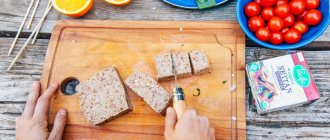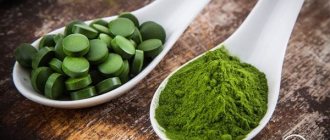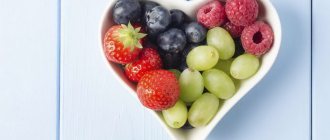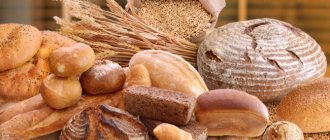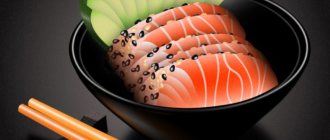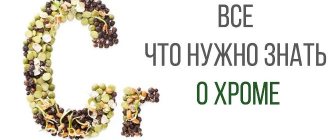Fiber is coarse plant fiber that is not digested by digestive enzymes in the body, but provides food for beneficial bacteria in the intestines.
Dietary fiber can be soluble or insoluble (more about the types in this article). Both types of fibers not only normalize digestive processes, restore intestinal microflora and eliminate flatulence and constipation, but also have a beneficial effect on the health of the entire body: they reduce sugar and cholesterol levels, and maintain blood pressure within normal limits.
You can get dietary fiber from most common foods. Below is a list of the 30 top foods rich in fiber, along with their specific gram content.
What is fiber?
This is a special type of carbohydrate called dietary fiber that is not digested by the human body. When they enter the stomach, they are transformed into sugar molecules, do not decompose, and are excreted from the body.
Fiber normalizes blood sugar, which has a direct effect on feelings of satiety and hunger. Thanks to these special carbohydrates, food moves through the gastrointestinal tract (gastrointestinal tract). A deficiency of dietary fiber in the body causes constipation and metabolic disorders.
Fiber, what products contain and reviews, in Sergei Agapkin’s program “about the most important things”
Dietary fiber and a slim figure
“When losing weight, our task is to deceive the body a little and put it into a state of energy deficit (calorie consumption is higher than their intake). We do this through fractional nutrition, rotating calories and macronutrients,” says Nika Tyutyunnikova. According to her, soluble and insoluble dietary fiber are important in this scheme for the following three reasons.
- Cleansing. They promote the rapid removal of waste from the body, normalize the functioning of the gastrointestinal tract and metabolism.
- Hunger control. Significantly increasing in volume under the influence of moisture, ballast substances fill the stomach, create a feeling of fullness, and controlling hunger is one of the important points in the process of losing weight. Interestingly, some types of fiber can absorb four to six times their own weight in water.
- Saturation. Foods rich in fiber require more thorough chewing. As a result, the process of eating is delayed, and we become full before we have time to overeat.
Fitness trainer, nutritionist Nika Tyutyunnikova: “For effective weight loss, I introduce fiber-rich foods (cereals, legumes, fruits, vegetables) into the menu for all my clients.” I definitely recommend eating at least two servings of salad from non-starchy vegetables a day: cucumbers, celery, tomatoes, cabbage, asparagus, broccoli, bell peppers and radishes, leafy greens. From practice: absolutely everyone who changed their diet in this way changes in appearance. And it's not just about being slim. Skin, hair, nails, complexion, flat stomach - improvements are happening on all fronts.”
Daily fiber requirement
Adults and children, according to nutritionists, require about 20-30 g of dietary fiber daily. The diet of the average person, as a rule, does not include products that can cover this standard. Typically, people at any age consume a maximum of 15 g of fiber per day.
Physical activity increases the need for dietary fiber. For athletes involved in strength training, the daily figure increases to 38-40 g. This is due to an increase in the volume and calorie content of food.
Losing weight wisely
Plant-based foods with fiber are ideal for losing excess weight.
- Pumpkin seeds, rich in zinc, copper, phosphorus, selenium, essential oils, and many vitamins (A, B, K, C, D), are actively used.
They have many useful and medicinal functions: they normalize blood sugar and cholesterol levels, and are an excellent anthelmintic. They give excellent results in the treatment of dysbiosis, diabetes, and metabolic disorders in the body.
Should be taken half an hour before meals, 2 times a day, eat 2 tbsp. l. pumpkin seeds. Be sure to drink a glass of water. Course - at least 3 months
- The next product is wheat bran.
Consuming only 2 - 5 tbsp per day. l. , you will completely cleanse the intestines and its walls of mucus and undigested food residues that accumulate and settle there. Wheat bran is dissolved in a glass of water and is usually consumed along with first courses.
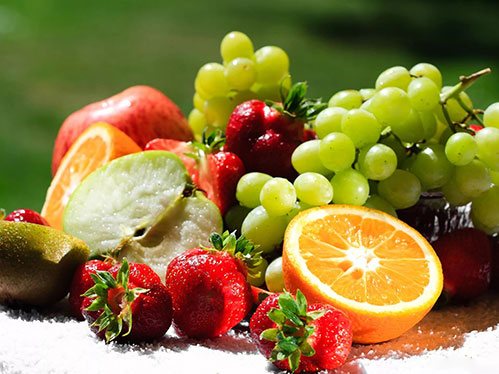
- It is impossible to lose weight without fruits, vegetables, and nuts. You can combine it as you like and use it as breakfast, evening snack, or when you feel hungry.
- Including milk thistle in your daily diet will provide powerful support to the immune system; thanks to its absorbent and antioxidant properties, it regulates the secretion of bile, slows down cell aging, improves metabolism and eliminates alcohol intoxication.
Also restores liver function. Taken in the amount of only 1 - 2 tbsp. l. one hour before meals, once a day. You should drink plenty of water, at least 250-300 ml. People with gastrointestinal diseases are not recommended to take milk thistle.
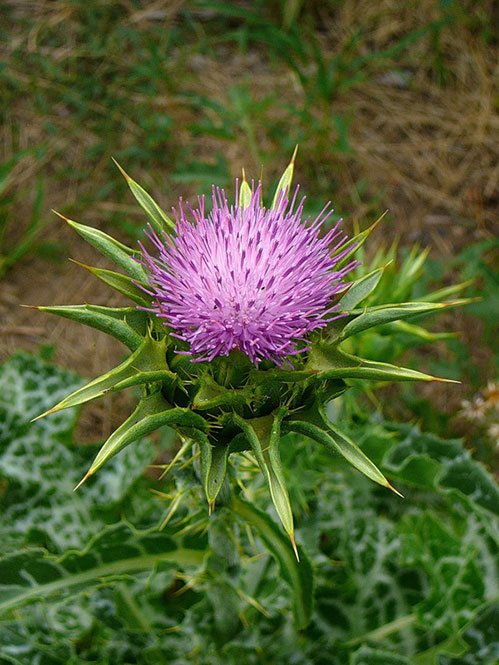
- It should also be noted Siberian (pharmaceutical) fiber , which does not include preservatives or artificial components, but consists of lignin, pectin, resin of the legume family and bran of cereals and plants. Available in powder form, which is good to combine with fermented milk products or natural juices. The acceptance rate is individual.
Flax seed
Fiber from flax seeds is very useful and popular. It has a lot of useful components and properties:
- micro and macroelements, vitamins A, B and PP;
- amino acids;
- fights cancer cells, thereby preventing cancer;
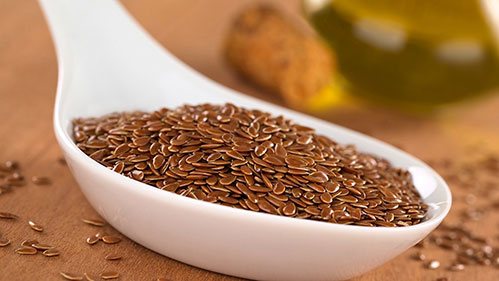
- regulates processes in the kidneys and genitourinary system;
- cleanses the liver and the entire body of heavy metals;
- wonderfully heals the intestines and relieves constipation;
- helps a lot with obesity;
- relieves hangovers by removing toxins and excess fluid.
Flax fiber is taken as a separate dish (at least 2 teaspoons per day half an hour before meals), and it is also used in cocktails; it is very good to add to kefir.
Almost every day I eat 1-2 teaspoons of ground flax seeds with 1-2 glasses of water, preferably in the morning on an empty stomach after drinking a glass of water.
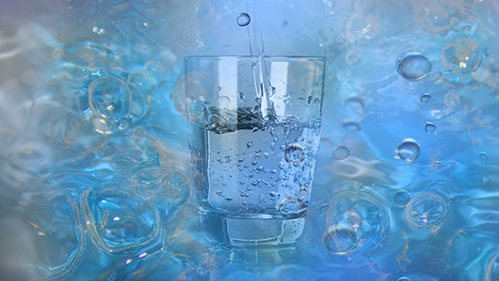
Making this kind of fiber is easier than you think. I buy flax seed, preferably organic. I grind it in a coffee grinder. I make a little so that it is always fresh. I store it in the refrigerator in a glass jar. May go rancid if stored at room temperature.
Caution, flax seed is a phytoestrogen and can increase estrogen levels in the body.
Why does modern man experience fiber deficiency?
The reason lies in the diet, which consists of sweets, snacks, products made from refined flour, white rice as a side dish, packaged juices and other products that are practically devoid of vitamins and fiber. It is impossible to compensate for this deficiency by taking complex vitamins and synthesized fiber.
If there are no vegetables on the menu, and fruits are consumed in candied or other forms with fast carbohydrates, this negatively affects health and increases the risk of developing diabetes, cardiovascular diseases, and obesity. This can be avoided by eating natural foods, which form a healthy and balanced diet.
Cauliflower
Cauliflower is a popular food in low-carb diets as it acts as a grain replacement or can even be used to make low-carb pizza.
Cauliflower is a cruciferous vegetable that is low in calories and carbohydrates but high in fiber, vitamins and minerals.
It is also a good source of choline, which is important for brain and liver health, as well as metabolism and DNA synthesis.
One serving (85 grams) of chopped cauliflower contains 2 grams of fiber and 2 grams of net carbs.
Which foods contain the most fiber?
Legumes, Turkish and regular peas, whole grain wheat flour, bran and avocado contain about 10-15% of dietary fiber from their own dry mass. A small portion of any of these products provides about 5-10 g of this carbohydrate.
Fiber comes from lettuce, cabbage, cauliflower, unpeeled potatoes, sweet potatoes, corn, broccoli, pumpkin, carrots, green beans, asparagus, whole wheat pasta, pears, bananas, apples, strawberries, blueberries, oranges, raisins. , mango, nuts.

Main types of plant fibers
Products with fiber elements are divided into the following types:
- Soluble
- when mixed with liquid, they take the form of a jelly and viscous substance that envelops the walls of the stomach and intestines, slowing down the digestion process. Contains pectin, resins (gum), adhesives.
Contained in berries, oats, legumes, peas, rice bran, barley, citrus fruits, lentils, raisins, avocados, apples, peaches, pears.
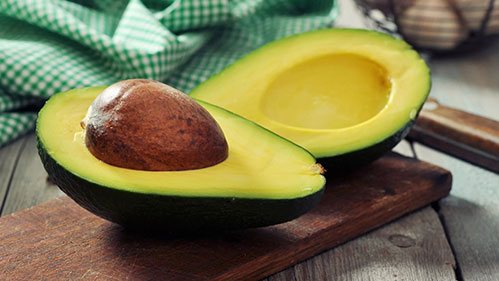
- Insoluble
- upon contact with water, they increase and slow down the digestion of food. The composition contains cellulose and lignin. Such substances soften stools, reduce appetite, filling the stomach.
The largest amount of insoluble elements is in unprocessed grains and legumes, bran, whole grain bread, various types of cabbage, nuts, seeds (pumpkin and flax), dried fruits, and solid elements of vegetables and fruits.
Proper consumption of fiber
Excess fiber also has its negative consequences. Eating a lot of dietary fiber can cause bloating. This particular carbohydrate reduces the absorption of nutrients needed by athletes dieting to gain muscle mass.
The daily dose is best consumed in several doses:
- 5 g at breakfast - porridge or muesli;
- 10-15 g for lunch - legumes or brown rice, fruit;
- from 10 to 15 g at dinner - avocado, green vegetables.
Menu may vary. The main thing is to follow the recommended norm.
Product #4: edamame
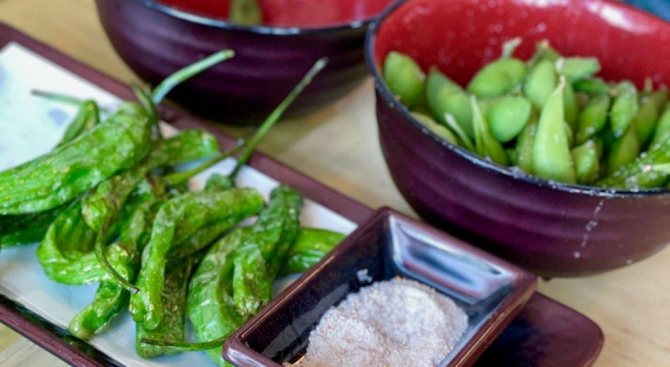
Instead of eating another bag of unhealthy chips, why not try edamame? Edamame is a pod of soybeans that is a tasty snack that is rich in fiber (contains about 5 grams per 1/2 cup, which is 18% of the Daily Value). They combine proteins, fiber and healthy fats.
There is another significant benefit of eating edamame: People who regularly eat foods with isoflavones, such as edamame or tofu, have a lower risk of developing various types of heart disease.
Edamame, like freshly picked green peas, can be eaten straight from the pod, cooked as a Thai appetizer, or added to your favorite salads.
Fiber Content Tables
The tabular data is based on “ideal indicators” and cannot be perceived as a source of 100% truthful information. The amount of dietary fiber depends on the growing method used and further preparation. Cooking softens the fiber, making it easier for the body to digest and absorb this carbohydrate.
Not all tables are reliable. Many places grapefruit at the top of the list of fiber sources. One hundred grams of fruit contains a maximum of 1.5 g. It is better to focus on which foods have more fiber than just by numbers.
| Products, 100 g dry | Cellulose |
| Bran | 40-45 g |
| Flax-seed | 25-30 g |
| Dried mushrooms | 20-25 g |
| Dried fruits | 12-15 g |
| Legumes (lentils, beans, chickpeas, etc.) | 9-13 g |
| Whole wheat bread | 8-9 g |
| Various berries (blueberries, lingonberries, etc.) | 5-8 g |
| Avocado | 7 g |
| Sweet fruits (peaches, oranges, strawberries, etc.) | 2-4 g |

Product #8: Chia seeds
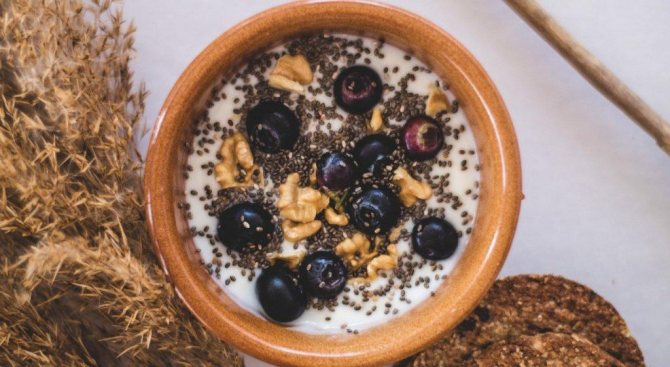
Want a simple life hack on how to add more fiber to your food? Use [Official Source] chia seeds. The product in question is especially rich in fiber: 28 grams contain a record 35% of the daily value!
There are other benefits to this tiny superfood. Chia seeds are one of the richest sources of plant forms of omega-3 fatty acids.
You can add some chia seeds to oatmeal, cereal, baked goods, or make a pudding by mixing the seeds with milk, for example, and letting them absorb the liquid overnight.
And don't worry about them overpowering the flavor of your food. Chia seeds are practically tasteless, so you can actually add them to anything.
Useful tips for use - do no harm!
It is better to eat vegetables and fruits raw; the most effective are porridges with fruits; it is advisable to purchase cereals and breads with whole grains. You need to drink a lot of fluids to avoid dehydration.
In order for the consumption of fiber to heal the body, you should adhere to the norm. Excessive consumption can lead to bloating, gas formation, and poor absorption of iron, zinc, and calcium by the body.
Consult a nutritionist if you suffer from allergies or serious medical conditions.
I hope that new knowledge will bring you, dear ones, only benefit. Share information with friends, subscribe to updates and be healthy! Bye!


